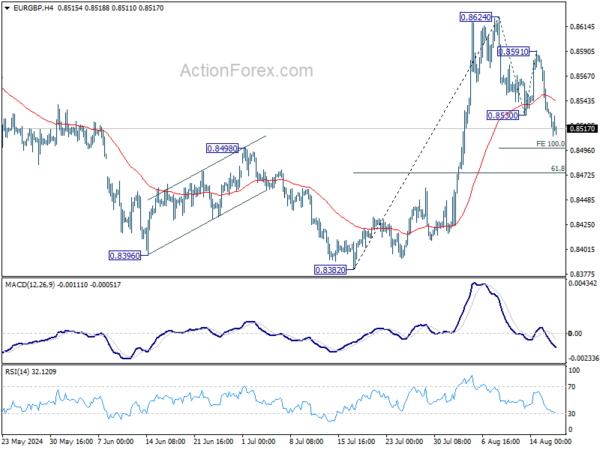Published : 1 min ago, on
By Stefano Rebaudo
(Reuters) – The pound was on track for its biggest monthly fall since September 2023 against the dollar while being roughly unchanged versus the euro with markets focused on major central banks‘ monetary easing paths.
Bank of England officials showed last week a more cautious approach to policy easing, with Governor Bailey arguing inflation is being pushed down by annual base effects.
Interest rate-setter Catherine Mann, meanwhile, said the cooling of price growth still had “a long way to go” before hitting the central bank’s 2% target.
Some analysts say that the pound has also benefited from its positive correlation to risky assets.
Oil prices tumbled by more than $4 a barrel on Monday as fears of an escalation of the Middle East conflict subsided after Israel’s retaliatory strike on Iran over the weekend did not disrupt energy supplies.
Sterling was last up 0.1% against the U.S. dollar at $1.2970 and on track for a monthly fall of around 3%, the biggest since September 2023.
The dollar was set to end the month with its most significant rise since April 2022 as strong economic data and bets on Donald Trump winning the presidency in the Nov. 5 election drove bond yields higher.
The pound slipped 0.05% to 83.33 pence per euro and was set to end the month down by 0.1%.
Traders are also focused on the new Labour government’s first budget on Oct. 30.
Yields on British government bonds climbed on Thursday after a newspaper said finance minister Rachel Reeves was set to give herself a lot more room for borrowing in this week’s budget, which could slow the Bank of England’s rate cuts.
Analysts noted that under the pre-existing fiscal rules, the government would have limited additional headroom to introduce capital investment measures.
“The policies announced in the budget will come on top of large increases in minimum wages,” said Andrew Wishart, senior UK economist at Berenberg.
As we expect domestic demand to strengthen in 2025, those costs are likely to be passed on to customers in the form of higher prices, adding to inflation,” he added.
Such developments could lead the BoE to further slow down the pace of its rate cuts.
(Reporting by Stefano Rebaudo; editing by Emelia Sithole-Matarise)







